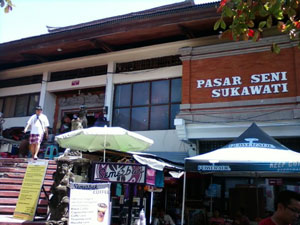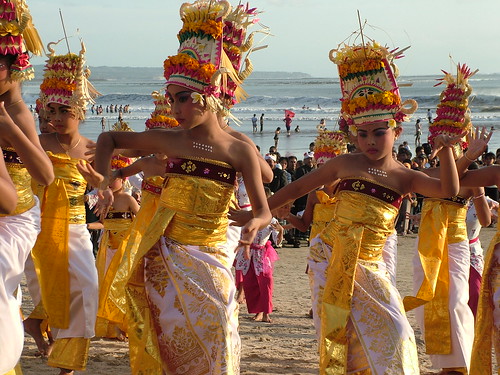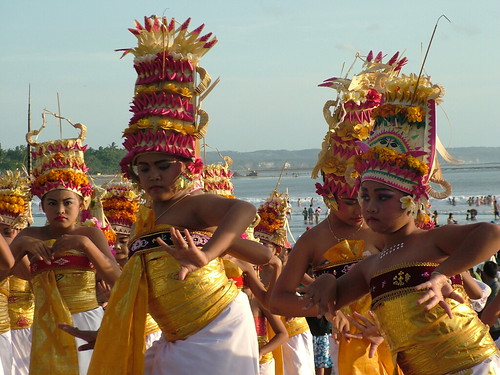 Denpasar
DenpasarDenpasar being the capital of Bali, is the main "market" for the Balinese. Kumbasari market, which is nearby Badung River, is the biggest traditional market. It is the perfect place to get an insight into the traditional Indonesia market where local people do their daily shopping. Fruit, vegetables and meat can be found in the basement; on the second level is the place for spices and dried goods; while household wares, clothing, art and craft is on the third level. Here you can get a very good price if you're smart in bargaining. To find handicrafts, shoe shops and restaurants, you can head towards the northern part of Gajah Mada Street. To the east is Sulawesi Street, where you can get textiles and fabrics. On both sides of Sulawesi Street, you can find shops providing household wares. The area here is very colorful with all types of material from the traditional "songket" (cloth woven with strands of gold or silver) to modern day stretchy and shiny material. Why not buy your cloth by the meter and have a suit or dress made up by a local tailor. On the west Side of the market is the place for locals to buy coconut leaf and ceremonial supplies. In the southern part is Hasanudin Street where you can see gold and jewellery shops, tourists are always welcome but Ubud
 Ubud is well-known for fine arts with international standard. This is where you can get the best Balinese culture arts and crafts. Highly-regarded art galleries such as Sumertha, Neka, Agung Rai, Rudana and Sika are highly recommended. Big names like Hans Snel and Antonio Blanco is recommended too however they may be really expensive.
Ubud is well-known for fine arts with international standard. This is where you can get the best Balinese culture arts and crafts. Highly-regarded art galleries such as Sumertha, Neka, Agung Rai, Rudana and Sika are highly recommended. Big names like Hans Snel and Antonio Blanco is recommended too however they may be really expensive. The Kuta Area
The Kuta AreaAs an international village almost all of the shops and restaurants here are for tourist market. You can find handicrafts, clothing, jewelry, CDs, furniture and leather crafts on each side of the road. But you can also see many street hawkers with their various offerings along the road. If you do not want to buy anything from them, do not make eye contact and do not ever look at their products, for if you do, they will follow you along the street and pester you to buy something.
 Batubulan
BatubulanOn the border of Denpasar and Gianyar, lies Batubulan, the home to sculptures made of stone. You can find various kind of sculptures here ranging from traditional to minimalist, small to large, cheap to expensive :) The craftsmen can sculp random and custom orders and even ship them to your home address back in your country.
 Sukawati
SukawatiThis area is popular to shop for Balinese arts. If you ask the locals where to get the cheapest Balinese arts and crafts, Sukawati will be their answer. Besides arts and crafts, you can also find statues, paintings, cloth, Balinese jewelry and also Balinese ceremonial needs,
 Tegalalang
TegalalangVery colourful wooden carvings of flowers, objects and more are displayed gracefully along the road. Various woodcarvings can be found in this village and its nearby neighbourhood at cheap prices! Here's the place to really master the art of bargaining.
 Bono
BonoThe village to shop for anything made of Bamboo! Yes practically everything from furnitures to mats to window blinds! The villagers are really good at making use of Bamboo for their crafts. You'll be amazed at their talent and creativity!
 Tenganan
TengananThis is where the native Balinese are located. The "Bali Aga" village in Karangasem, is the only village in Bali that produces the sought-after Balinese Geringsing textile. The materials for Geringsing are all acquired from the surrounding nature. To process Geringsing fabric, traditional methods rooting back to the old Balinese times, are used. The fabric is very delicate, durable and long-lasting thus the expensive price tags! No chemicals are used in the process and great care is taken to ensure the "natural" process.



























